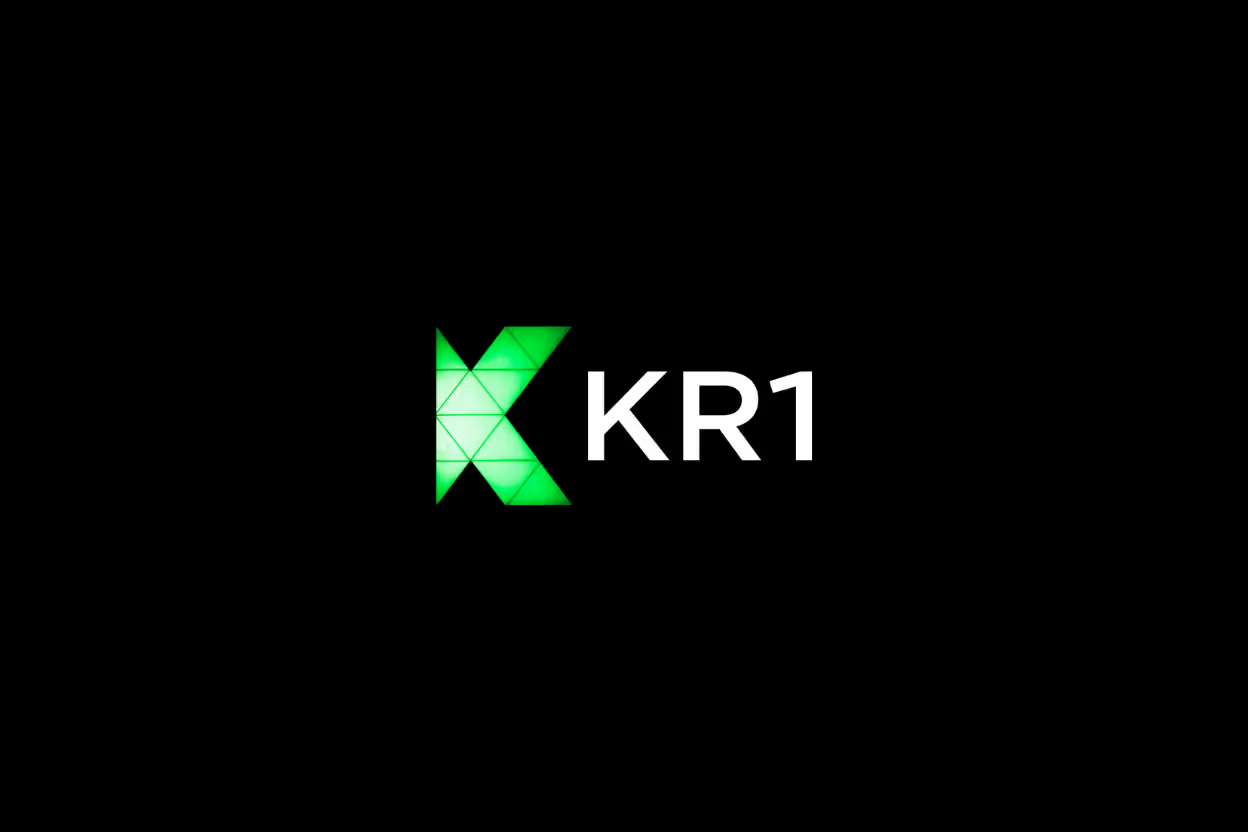A single tweet can start more than just a conversation; it can reshape a project’s entire direction. In crypto and blockchain, that brief message sometimes becomes the plan that guides development. Social media now affects how projects form roadmaps, where ideas spread fast and community feedback drives change.
This post explains how a simple one-liner tweet turned into a detailed protocol roadmap. It shows why quick communication matters in shaping protocols today. Whether you're launching a startup or managing a project, understanding this process is key to staying adaptive and in tune with your audience.
The Power of a One-Liner Tweet in Crypto Communication
In the fast-moving world of crypto, a single line can carry enormous weight. A brief tweet can spread ideas instantly, stir debate, or set a new direction for an entire project. This section explores why Twitter stands at the heart of blockchain and Web3 talks, and how one-liner tweets have sparked major changes in the crypto ecosystem, proving that sometimes less really is more.
Why Twitter is Central to Blockchain and Web3 Discussions
Twitter has become the go-to platform for crypto communication because it delivers speed and reach unlike any other social network. In blockchain and Web3, projects rise and change quickly—so staying updated means information must travel fast. Twitter offers that in real time.
- Instant updates: News hits Twitter first. Developers, founders, and investors often share milestones, bugs, or ideas immediately.
- Direct influencer access: Key voices in crypto use Twitter as their mouthpiece. What they say can move markets and influence public opinion instantly.
- Community feedback loop: Twitter allows projects to gauge community interest or concerns right away through likes, retweets, and comments.
- Concise messaging: The character limit challenges users to say more with less, demanding clarity and punch—a perfect fit for the crypto world’s quick exchanges.
When you consider how quickly blockchain protocols develop, Twitter isn’t just a social tool. It’s a hub for decision-making and discovery.
Examples of One-Liner Tweets Sparking Significant Conversations
History shows that sometimes a single tweet is enough to reshape an entire project’s course. These one-liners often trigger widespread reactions, guiding protocol roadmaps and inspiring new features.
Here are some examples where a short tweet had an outsized impact:
- Vitalik Buterin’s brief thoughts: Vitalik frequently uses short tweets to drop new ideas. When he briefly mentioned “sharding” for Ethereum’s scaling, it sparked intense research and became a core protocol goal.
- Introducing DeFi innovations: A simple tweet announcing a new liquidity mining feature by a project like Compound led to a surge in DeFi activity and cloned ideas across platforms.
- Community-driven forks or fixes: When a developer tweets about a critical bug or potential improvement, projects have pivoted swiftly, turning that one-liner into a concrete roadmap change.
Why do these tweets grab attention? Because crypto projects rely on agility and community input. A single well-timed line can open doors to strong collaborative energy, shifting priorities on the fly. This raises the question: how can founders structure their communications to ignite action with concise messaging?
The power of one-liners in crypto isn’t just about brevity. It’s about sparking momentum, guiding development, and establishing a shared vision—all within 280 characters.
From Tweet to Protocol Roadmap: The Evolution Process
Turning a single tweet into a detailed protocol roadmap is not just a matter of copying ideas. It’s a layered journey involving community voices, technical assessment, and continuous updates. This process shapes raw concepts into real plans that guide development and need to meet both the community’s hopes and practical realities. Let’s explore how this transformation happens step by step.
Capturing Community Feedback and Interest
The moment a tweet drops an idea, community reaction acts like a spotlight revealing what grabs attention. Why does this stage matter so much? Because the community isn’t just an audience—they’re active participants whose feedback shapes priorities.
- Immediate Reactions: Likes, retweets, and comments quickly show if an idea resonates or raises doubts.
- Rich Discussion: Conversations in replies or across forums flesh out pros, cons, and possible improvements.
- Building Momentum: When a tweet sparks widespread interest, it signals something worth digging into further.
Listening closely at this stage prevents projects from going off track or chasing ideas that don’t fit the community’s needs. It also builds shared ownership as people feel heard from the start.
Incorporating Technical Feasibility and Development Planning
After initial community signals, the focus shifts to the technical team. How do engineers and architects turn a tweet’s spark into a workable plan?
- Assessing Reality: They evaluate whether the idea is possible given the current technology and resources.
- Scoping the Work: Breaking down the concept into concrete features and tasks is crucial for planning sprints and milestones.
- Risk and Impact: Teams analyze potential challenges, security issues, or dependencies that could affect timelines.
This phase balances excitement with caution. An idea can be appealing but still require major redesigns or could introduce risks. The goal is to find the intersection where the vision meets what’s feasible and safe.
Iterative Refinement and Public Transparency
A roadmap isn’t set in stone after the first draft. It thrives through ongoing refinement based on feedback from testers, partners, and the wider community.
- Updating the Plan: As development advances, new insights or obstacles mean the roadmap must adapt.
- Engaging Stakeholders: Regular updates shared openly invite feedback and build trust.
- Demonstrating Progress: Transparent communication shows that the protocol is evolving in line with expectations and commitments.
This iterative cycle keeps the project aligned with both technical realities and community expectations. It’s a continuous dialogue, not a one-time announcement.
Together, these stages transform a simple tweet into a living document that guides development and invites participation. It’s a process that blends listening, planning, and adapting—key ingredients for any crypto project aiming to grow in step with its users.
Impact on Crypto Founders and Investors
When a project founder posts a short, clear message on Twitter, it often starts more than just chatter. That one-liner can open a line of communication that builds a stronger bond between the team and its followers. For founders and investors, this shift matters a lot—it can shape trust and confidence early on, influencing the entire project's future.
Building Trust through Openness and Community Engagement
Trust doesn't happen overnight. It grows when a team shares openly and listens to its community from the start. A simple tweet can be the first point of real connection. When founders provide transparent updates or share ideas publicly, they invite supporters to join the journey, not just watch from the sidelines.
This openness does several things:
- Shows the team values honesty and direct communication.
- Encourages active feedback and idea exchange.
- Creates a sense of shared purpose that goes beyond investors or early adopters.
- Prevents misinformation by keeping everyone informed in real time.
Community engagement isn’t just about broadcast. It is a two-way street where people feel heard and involved. That involvement turns casual observers into loyal advocates willing to back a project even through challenges. Have you noticed how projects with strong social interaction often outlast those that don’t?
Enhancing Investor Confidence with Clear Roadmaps
Investors seek clarity. A roadmap born from community input and public discussion signals more than just future goals. It reveals transparency and preparedness. When investors see a roadmap developing visibly—step by step—they get more than promises; they see a strategy that adapts to real input and technical realities.
Here’s what a clear, community-shaped roadmap offers investors:
- Visibility of Progress – Investors track milestones and judge how realistic goals are.
- Reduced Risk – Open updates and feedback loops show risks are managed openly.
- Aligned Interests – When investors and community share goals, projects gain wider support.
- Confidence in Leadership – Founders who engage with their audience appear more reliable and dedicated.
This approach shifts investor relations from blind trust to informed commitment. Instead of wondering if a project can deliver, investors watch the process unfold with clarity.
Together, these elements show how a brief tweet can start a chain reaction that builds trust and confidence across a project’s earliest and most critical stages. This transparency sets a firm foundation for growth, both in technology and in community strength.
Challenges and Risks in Using Social Media for Protocol Planning
Social media is a powerful tool for protocol founders to communicate ideas quickly and involve their communities in decision-making. However, this openness comes with its own set of challenges and risks. Founders must balance transparency with clarity while avoiding pitfalls that can mislead their audience or disrupt development. Let’s break down some key areas where careful management is crucial.
Managing Misinformation and Public Expectations
Social media spreads information fast, but not all of it is accurate or complete. Founders who share early ideas risk misinterpretation or unrealistic expectations from the community. How can they stay clear and honest without losing engagement?
- Set clear boundaries: Share what is confirmed and what is still under discussion. Avoid vague promises that can be spun in multiple ways.
- Use simple language: Avoid jargon that can confuse readers or fuel speculation. Clear, straightforward communication builds trust.
- Correct errors swiftly: If misinformation starts to take hold, respond quickly with facts to steer the conversation back on track.
- Manage hype carefully: A surprising announcement can excite community members, but excessive hype raises the risk of backlash if timelines slip or features change.
- Engage with transparency: Regular updates, even about setbacks, demonstrate honesty and keep expectations realistic.
By setting the tone early, founders keep the community informed without creating hype bubbles that burst later. This is essential to maintaining credibility through the ups and downs of protocol development.
Balancing Speed and Accuracy in Protocol Development
Social media thrives on speed, but technical development requires patience and precision. Founders often find themselves caught between pushing updates quickly to satisfy the community and taking the time to thoroughly test new features. How do you strike the right balance?
- Prioritize security: Rushing can lead to vulnerabilities or bugs that damage user confidence and the protocol’s reputation.
- Implement staged rollouts: Share incremental improvements, making it easier to monitor impact and fix problems early.
- Foster community feedback loops: Use social media as a two-way channel where early testers can report issues, but keep major launches gated until validated.
- Communicate timelines honestly: Be transparent about what can be delivered quickly and what takes longer to get right.
- Avoid reacting solely to the loudest voices: Not all feedback reflects broader needs or technical feasibility. Founders must filter input carefully.
Is it better to move fast and risk mistakes, or wait longer for a polished release? This tension is constant, but managing it well means building both community trust and a robust product.
Keeping social media channels active and clear while respecting the rigor of software development can be a tricky path. But getting it right shapes how the protocol evolves from a simple tweet into a reliable and trusted roadmap.
Best Practices for Founders Turning Tweets into Roadmaps
Transforming a simple tweet into a well-structured protocol roadmap takes more than just an idea. It requires building the right conversation with your community, balancing their input with your development goals, and keeping everyone informed about progress. Founders who do this well don’t just respond to noise—they create a clear path forward, maintaining trust and momentum. The following practices will help guide that process effectively.
Engaging Authentic Community Dialogue
The key to moving beyond hype is fostering real, helpful conversations. When you tweet a new idea, it can be tempting to focus on the buzz or viral moments. Instead, lean into what matters: genuine dialogue.
- Ask open questions: Invite the community to share different views or concerns.
- Respond thoughtfully: Show you value input by addressing questions or doubts honestly.
- Moderate for substance: Keep discussions focused by steering away from spam or meaningless hype.
- Highlight diverse voices: Encourage contributions from beginners and experts alike to get balanced feedback.
Building this kind of interaction isn’t just about gathering opinions. It creates a sense of participation and ownership, making it easier to navigate any debate or disagreement that arises later. Have you noticed how communities that feel heard stay engaged longer?
Integrating Feedback with a Clear Development Vision
Community ideas are valuable, but they can’t replace a focused development strategy. Your job as a founder is to take that feedback and filter it through what’s practical and strategic.
- Prioritize requests: Not every suggestion fits the current phase or mission. Rank feedback by impact and feasibility.
- Set clear goals: Define specific outcomes for each roadmap update so everyone understands the “why” behind the work.
- Balance innovation and stability: New ideas should improve the protocol without risking core functions.
- Explain choices: Share why some suggestions will be adopted or deferred to maintain transparency.
This step grounds community enthusiasm in reality. It keeps your roadmap realistic, focused, and aligned with longer-term goals. How do you keep your development plans flexible while still taking a firm direction?
Communicating Progress Transparently
Trust builds on honesty. When you update your roadmap, share both wins and setbacks openly.
- Regular updates: Schedule consistent communications so the community knows when to expect news.
- Use clear language: Avoid jargon or vague statements. Be direct about what has been achieved or delayed.
- Show data and milestones: Visual progress, like charts or timelines, helps make updates tangible.
- Explain changes: If the roadmap shifts, describe why and what it means for the project’s future.
Transparency keeps the community connected through challenges. It shows respect for their involvement and sustains confidence in your leadership, even when timelines shift. What ways have you found effective for keeping your audience both informed and engaged?
By focusing on authentic community dialogue, balancing feedback with clear vision, and maintaining transparent communication, founders can turn a single tweet into a trusted and actionable project roadmap. This approach not only drives development but also builds a loyal support base critical for any protocol’s success.
Conclusion
The interaction between social media and protocol development has shifted how projects chart their course. A simple tweet can spark conversations that grow into detailed roadmaps, blending ideas from the community with technical planning.
Founders benefit from embracing open dialogue while keeping their vision clear and realistic. Investors gain confidence when roadmaps develop transparently through public feedback and measurable progress.
Balancing community input with development rigor is essential. It ensures that the roadmap is both responsive and reliable, guiding projects steadily toward their goals.
What lessons will your project draw from this? Staying connected with your audience while maintaining strong technical standards can set the foundation for lasting success.









